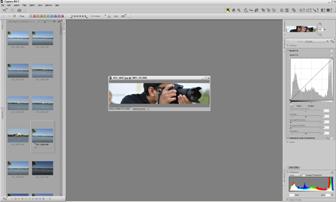When I bought my first DSLR three years ago, I had no clue about the composition, photography technique, lighting and many other things. I just bought a DSLR camera because I had interest in photography and enjoyed taking pictures. I still remember a shot of a deer that I took from the back and was very happy with the result. It had shallow depth of field, well focused and good light. I couldn't find anything wrong with my picture and thought to share with my photography community. Guess what? My composition was completely wrong which I realized after fellow photographers commented about it. And you probably have already guessed what went wrong on my picture. Yes, I took the shot from the back of an animal and viewers couldn't connect to that photograph very well. I started learning from my mistakes and today, I thought I would write something about what I learned so far so that you don't have to go through same mistakes and waste your time. But instead, you can use that time for taking creative shots.
When shooting animals, there are few important camera settings and the composition ideas which you may want to follow to get better results and connect well to the viewers. Let me explain them briefly in points.
1. When shooting birds or animals, you may want to use the spot metering so that the camera meters exposure based on the focus point.
2. Use Continuous-servo (AF-C) Autofocus mode with the single point AF or the Dynamic Area AF Autofocus point. When you in AF-C mode, after you press the shutter release button, camera focuses your subject wherever you select the focus point and continues to monitor the subject to refocus if the subject moves along and the single point focusing method helps you to focus on particular area, an eye for example. Using the Dynamic Area AF helps you to track the moving subject if it goes out of focus in the frame. If you are shooting flying birds or fast moving animals, you may want to use the Dynamic AF points.
3. Use the widest aperture (smallest f number) possible so that you will get the faster shutter speed to freeze the motion of moving subjects.
4. While shooting animals, try to focus on eye as much as possible because it naturally draws the viewer’s attention to the photograph immediately.
Here are few photographs I took recently and hope you will like it.
This shot was taken at the National Zoo, Washington DC and I liked how this cat is cautiously look at me while drinking water.
Learning from the mistake is the best way to learn. You will never forget what you learned and sharing those ideas with others help you grow even bigger and faster.












